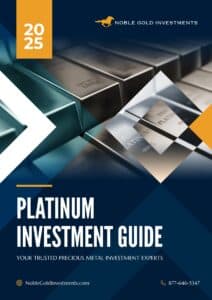Planning for retirement is a crucial aspect of financial stability, and while 401(k) plans are a popular choice, they are not the only option available. It is essential to explore additional strategies to ensure a more robust retirement fund.
Diversifying beyond a 401(k) can provide greater financial security and flexibility, particularly if you wish to retire early or optimize tax benefits. Keep reading to learn more about 401(k) alternatives for retirement planning.
Individual Retirement Accounts (IRAs)
Individual Retirement Accounts (IRAs) provide a flexible and tax-advantaged way to save for retirement. They come in two main forms: Traditional and Roth, each offering distinct tax benefits and rules.
Traditional vs. Roth IRAs
Traditional IRAs offer tax-deferred growth, meaning contributions are taxed when withdrawn during retirement. This can be advantageous for those who expect to be in a lower tax bracket in retirement. Roth IRAs, by contrast, provide tax-free growth as contributions are made with after-tax dollars, but qualified withdrawals are tax-free. This suits individuals who anticipate being in a higher tax bracket when they retire.
Traditional IRAs have no income limits for contributions, while Roth IRAs have income limits that affect eligibility. Each type of IRA offers unique benefits tailored to current and expected future financial situations.
Self-Directed IRAs
In addition to traditional and Roth IRAs, some investors prefer to invest in a self-directed IRA due to the flexibility of what can be purchased in the retirement account. For example, Noble Gold Investments gives investors the ability to purchase gold, silver, platinum, and palladium in a self-directed precious metals IRA.
Understanding Contribution Limits and Tax Deductions
Annual contribution limits for IRAs are critical to maximizing retirement savings. For 2024, individuals can contribute up to $6,500 per year, with an additional “catch-up” contribution of $1,000 for those aged 50 and above. These limits are consistent across both Traditional and Roth IRAs.
Traditional IRAs allow for tax-deductible contributions if the individual or their spouse is not covered by a retirement plan at work. For those covered by an employer plan, the ability to deduct contributions depends on income limits set by the IRS. Roth IRA contributions, however, are not tax-deductible, but qualified withdrawals in retirement are tax-free.
IRA Rollovers and Conversions
IRA rollovers and conversions provide options for managing retirement assets. A rollover involves moving funds from another retirement account, such as a 401(k), into an IRA without incurring immediate taxes or penalties, provided it is done correctly within 60 days.
Conversions, notably from a Traditional IRA to a Roth IRA, involve changing the tax treatment of contributions. When converting, the individual must pay taxes on the converted amount during the year of the conversion. This strategy can be useful for individuals anticipating higher tax rates in the future or who prefer the tax-free growth and withdrawals of a Roth IRA.
Understanding these aspects can help in making informed decisions for retirement planning and maximizing tax advantages.
Maximizing Tax-Advantaged Accounts
To maximize retirement savings, individuals can leverage multiple tax-advantaged accounts such as Health Savings Accounts (HSAs), 403(b) plans, and Roth 401(k) contributions. Each offers unique benefits and features that cater to different financial goals and situations.
Health Savings Accounts (HSAs)
HSAs are powerful tools for covering healthcare costs in retirement while offering several tax advantages. Contributions made to HSAs are tax-deductible, and the earnings grow tax-free. Moreover, withdrawals for qualified medical expenses are also tax-free.
For those with high-deductible health plans (HDHPs), HSAs can be funded up to a certain limit annually. For 2024, these limits are $3,850 for individuals and $7,750 for families, with an additional catch-up contribution for those 55 and older.
The funds roll over year to year, and the account is portable, ensuring continued access regardless of employment changes. This combination of tax benefits makes HSAs a standout choice for long-term healthcare planning.
Understanding 403(b) Plans
403(b) plans are retirement saving options available to employees of public schools, certain nonprofits, and some ministers. These plans share similarities with 401(k) plans, such as tax-deferred growth and the potential for employer-matching contributions, which can significantly boost retirement savings.
Participants in 403(b) plans can contribute up to $23,000 annually if they are under 50, with additional catch-up contributions allowed for those 50 and older. The funds grow tax-deferred until withdrawal, ideally during retirement when the participant may be in a lower tax bracket, thereby reducing the overall tax burden. Employer matches can further enhance the account’s value, making 403(b) plans an excellent option for working in qualifying organizations.
Benefits of Roth 401(k) Contributions
Roth 401(k) contributions offer a distinct advantage for those expecting to be in a higher tax bracket during retirement. Contributions are made with after-tax dollars, meaning they do not provide a tax deduction in the contribution year; however, qualified withdrawals are tax-free.
This arrangement benefits young professionals or those anticipating higher future income because they lock in today’s tax rates. Roth 401(k) accounts also have the same contribution limits as traditional 401(k)s—$23,000 for individuals under 50, with an additional $6,500 catch-up contribution permitted for those aged 50 and above. Individuals can create a tax-efficient retirement income strategy by diversifying between pre-tax and post-tax accounts.
Investment Options Beyond Employer Plans
Exploring investment avenues outside of employer-sponsored plans can provide diverse opportunities for financial growth and stability. These options encompass various asset types, each with unique benefits and risks.
Brokerage Accounts
Brokerage accounts allow individuals to buy and sell a wide range of investments, including stocks, bonds, and mutual funds. Unlike retirement accounts, brokerage accounts offer flexibility since there are no withdrawal restrictions. Investors have control over their investment choices, enabling them to tailor their portfolios to their risk tolerance and financial goals.
One key advantage of a brokerage account is the ability to access a broad array of investment options. This includes individual stocks, which can offer high growth potential, and bonds, which provide stability and income. Taxes are an important consideration, as capital gains and dividends are subject to annual taxation.
Real Estate Investments
Real estate investments offer opportunities to generate passive income and build equity. This can include purchasing rental properties, investing in real estate investment trusts (REITs), or participating in real estate crowdfunding platforms. Each method has its own set of advantages.
Owning rental properties can provide consistent rental income, although it requires active management and maintenance. REITs allow investors to buy shares of real estate portfolios, giving them exposure to commercial or residential properties without the responsibilities of direct ownership. Real estate crowdfunding platforms enable smaller investments in larger real estate projects, diversifying the risk.
Mutual Funds and ETFs
Mutual funds and exchange-traded funds (ETFs) are pooled investment vehicles that allow investors to gain exposure to a diversified portfolio. Mutual funds are managed by professionals, which can be beneficial for those who prefer a hands-off approach. They can invest in various asset classes, including stocks, bonds, and commodities.
ETFs typically offer lower fees than mutual funds and trade like individual stocks on exchanges, providing flexibility and liquidity. Both mutual funds and ETFs help mitigate risk through diversification, spreading investments across multiple securities, and are suitable for those who seek long-term growth and stability.
Strategies for Optimizing Retirement Savings
Optimizing retirement savings involves understanding vesting rules and maximizing employer match benefits, regularly rebalancing your portfolio for diversification, and adopting long-term investment approaches to ensure steady growth.
Understanding Vesting and Employer Match
Vesting refers to the process by which an employee earns the right to employer-contributed funds over time. Knowing your company’s vesting schedule is crucial, as this schedule impacts your accumulated savings.
Employers often match a percentage of employee contributions to retirement accounts up to a certain limit. Maximizing this match is vital. For instance, if your employer matches 50% of your contributions up to 6% of your salary, contribute at least 6% to get the full benefit. This match acts as free money, enhancing your retirement savings.
Reviewing your company’s vesting policy and understanding your rights to these contributions can significantly affect your retirement funds. If possible, stay employed until you are fully vested to maximize these benefits.
Rebalancing Portfolio for Diversification
Rebalancing a portfolio involves adjusting the mix of assets to maintain a desired level of risk. Over time, market fluctuations can alter the balance of your investments, leading to unintended risk levels.
A diversified portfolio, which includes a mix of stocks, bonds, and other assets, can protect against downturns. Periodically rebalancing ensures that your investments align with your risk tolerance and financial goals.
For example, if stocks perform well and now constitute a larger portion of your portfolio, you might sell some and buy bonds to regain balance. Automatic rebalancing features in many retirement accounts can simplify this process.
Understanding and Managing Retirement Withdrawals
Effectively managing retirement withdrawals is crucial for balancing immediate financial needs with long-term goals. Key factors include understanding tax implications, penalties associated with early withdrawals, and mandated withdrawals through required minimum distributions (RMDs).
Tax Implications of Withdrawals
When withdrawing from retirement accounts, it is important to understand the tax treatment of different types of accounts. Traditional IRAs and 401(k) plans typically offer tax-deferred growth, meaning that withdrawals are taxed as ordinary income. This requires careful planning to avoid unexpectedly high tax bills.
Roth IRAs, on the other hand, allow for tax-free withdrawals provided that the account has been open for at least five years and the individual is over 59 ½ years old. Retirees should strategically manage how much they withdraw from each type of account to optimize their tax situation.
Early Withdrawals and Penalties
Withdrawing funds from retirement accounts before the age of 59 ½ generally incurs a 10% early withdrawal penalty in addition to standard income taxes. This can significantly reduce the amount of money available for future needs. Some exceptions to this rule include certain medical expenses, education costs, and first-time home purchases.
For those considering early retirement, understanding these penalties helps them make informed decisions. Additionally, having a diversified portfolio with taxable and non-taxable accounts can provide more flexibility in managing finances and avoiding unnecessary penalties.
Required Minimum Distributions (RMDs)
RMDs are mandatory withdrawals that must begin at age 73 for most retirement accounts, such as traditional IRAs and 401(k)s. The amount of the RMD is calculated based on the account balance and the individual’s life expectancy. Failure to take RMDs results in a substantial penalty—50% of the amount that should have been withdrawn.
Planning for RMDs is essential to avoid this penalty and ensure enough liquidity to meet these requirements. Strategies such as Roth conversions and timed withdrawals can help in managing RMDs effectively, allowing for continued tax efficiency and financial stability during retirement.
Speak With A Financial Advisor Before You Invest
One of the most important things to do before making any big investment decisions is to speak with a financial advisor. They can offer insights into different types of investment accounts and retirement options that best suit your lifestyle and income levels.
Whether it’s navigating the complexities of Social Security benefits or managing income streams from various investments, their role is essential. They also stay updated with regulatory changes, such as new Department of Labor rules affecting retirement money.
Opening A Precious Metals IRA With Noble Gold Investments
If you’re searching for a strong alternative to a 401(k) for your retirement portfolio, a self-directed precious metals IRA is a very popular choice. Precious metals tend to perform well during times of economic uncertainty and make an excellent hedge against inflation.
Start saving for your future and protecting your assets with precious metals today. Call us now at (877) 646-5347 to speak to one of our gold IRA specialists, or click here to open your account.







